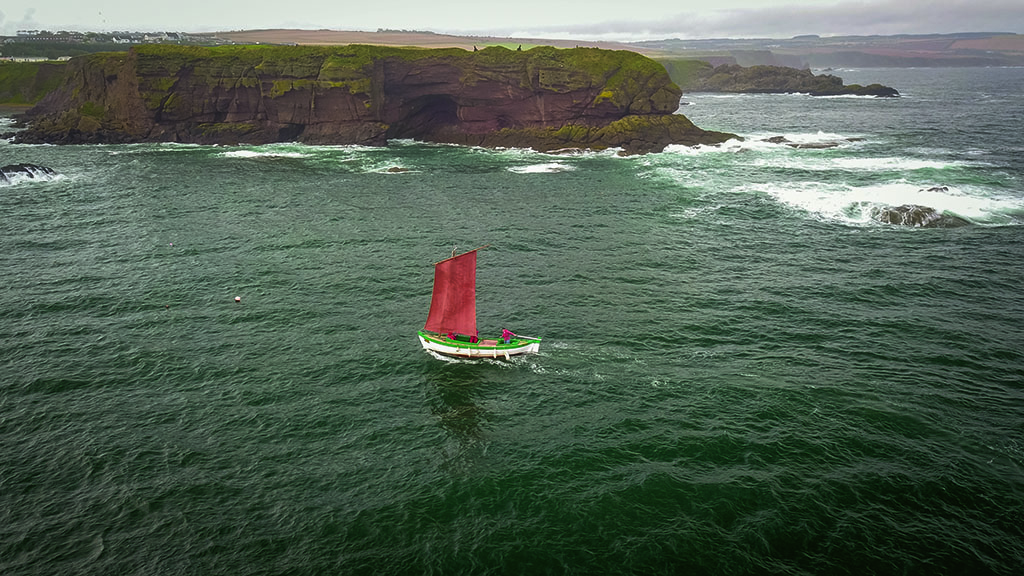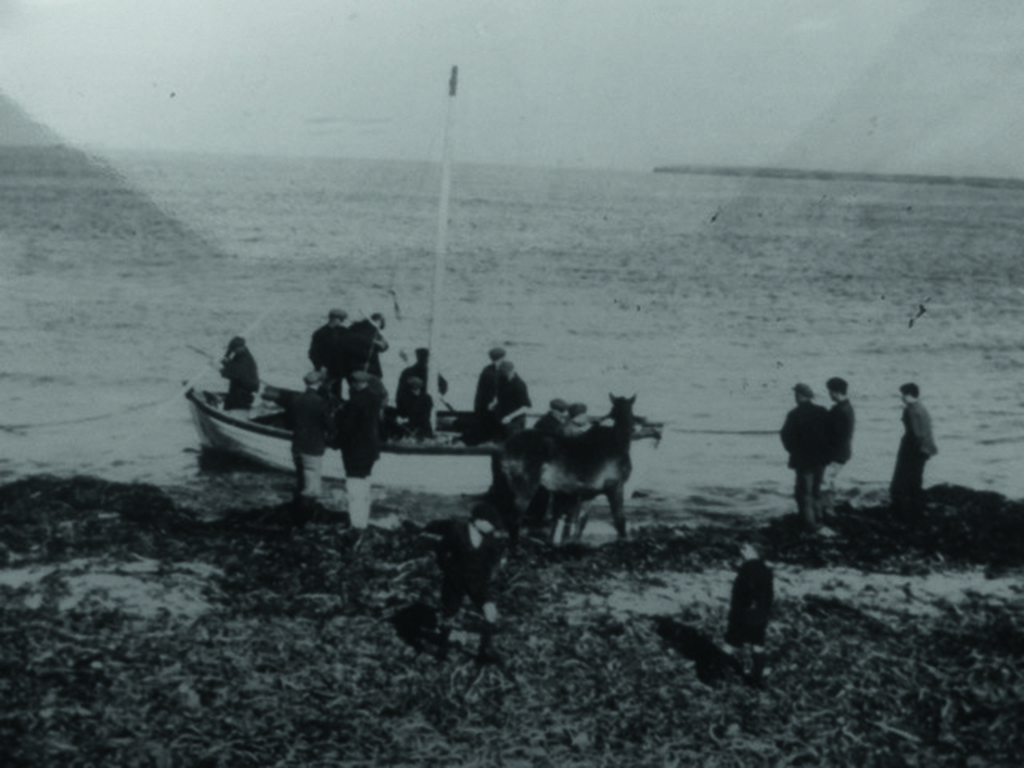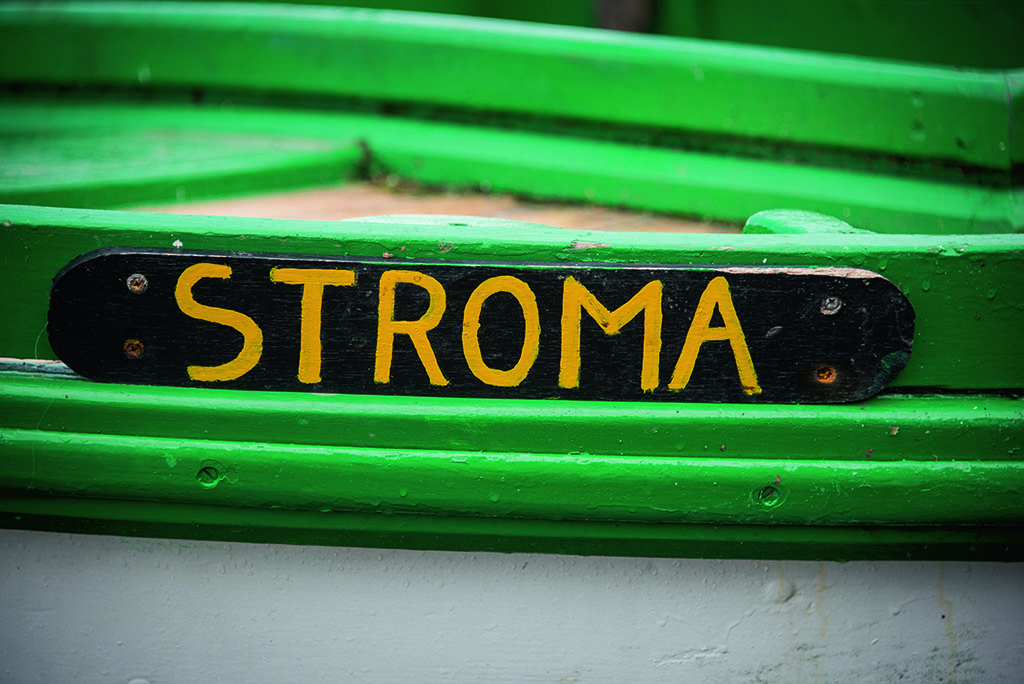
A legacy from Scotland’s maritime past for auction
Sotheby’s is currently offer one of the last remaining examples of the original Stroma Yoles, a style of boat that is a legacy from the days when Vikings lived and ruled in the North of Scotland.
‘Bee’, built in 1904, is currently owned by a charity, The Berwickshire Maritime Trust, who have used her to teach traditional sailing skills to young people.
Estimated at £10,000-15,000, Bee is being presented for sale as part of Sotheby’s Art of Travel online auction, running until 12 December. Sale proceeds will benefit the charity.
Nordic in design and closely related in shape to the Shetland Yoal and Sgoth Niseach of the Outer Hebrides, particularly in their cross-section shape and keel-joint construction, these boats were commonly used in the Orkney Islands and around the North of Scotland from the 8th and 9th centuries until well into the 20th century, with a few Orkney Yoles still being used for small-scale fishing in the 1960s.
To cope with the extremely rough seas around the island, the Yoles built for the people of Stroma were larger, with a fuller shape and a heavier build than the Yoles built on Orkney. However, they also had to be light enough to be dragged from the water and u onto the beach as there was no harbour on Stroma. Bee was the only livestock boat for Stroma and her extra sturdy construction is testament to the weight of supplies and animals that she carried for over 40 years.
Lucy Brown, head of Sotheby’s Edinburgh office, said: ‘The hull of Bee is one of the last remaining examples of the original Stroma Yoles. Sadly, so many wooden boats simply rot away but Bee was built to survive. Her design was purpose built for her environment; today, the tradition of building boats to suit local conditions has almost vanished, making Bee’s survival even more significant.
‘That proceeds from the sale will benefit a maritime trust dedicated to the promotion of seafaring is a fitting follow-on chapter to Bee’s 100-year history.’

DCIM100MEDIADJI_0203.JPG
Strongly constructed using larch planking, oak frames and copper fastenings, Bee is larger than most yoles. According to the Registry of Fishing Boats in Scotland, Bee was built by the Banks brothers at Harrow near Mey in 1904. She was registered in the port of Wick on 5 May 1912 and was given the registration number WK 378.
The entry for name of owner was ‘David Sinclair and other residents of Stroma’; the other owners were Hugh Simpson, James Robertson, Matthew Dundas and Sinclair Bremner – all were crofters on the island who required a boat to carry livestock to and from the mainland, across one of the roughest stretches of sea in Europe.
Fully seaworthy and with a complete Marine Survey Report carried out recently by a Naval Architect, Bee is a true workboat, built for seaworthiness and cargo carrying capacity. Stroma folk were crofters and expert fishermen who owed their existence in equal measure to the land and the sea. They built extremely seaworthy boats to cope with the conditions in the Pentland Firth. The main occupation on the island was long line fishing for cod but the inhabitants also kept livestock and cultivated their crofts.
A single vessel was needed to carry livestock to and from the mainland – Bee fulfilled this role for nearly 50 years. There is no record of her ever being sunk.
In Anne Houston’s book Lest We Forget Canisbay, there is a description of Bee being used to transport a horse to the island. The charge for transporting a beast was one shilling and it took 12 strong men to load horses or cattle onto the boat, which had to be pulled over by a rope attached to the top of the mast until the gunnel was touching the water, so that the animals could climb aboard.

In 1941, a bull belonging to the Department of Agriculture was being transported back to the mainland aboard Bee when the animal took fright and put its hoof through the bottom of the boat.
The crofters had to return to the island in a hurry and Sutherland Mason, who was a young boy living on the island at that time, remembers all the local families were given a joint of beef.
Sadly he also remembers Bee lying damaged on the beach at Stroma for many years. Although the island had its own church, school, shop and post office, the two world wars of the 20th century provided opportunities for finding more lucrative employment on the mainland and people moved away. Stroma and Bee were abandoned until 1968 when Bee was rescued, bought from the descendants of the original owners for £1, and towed to the mainland for repair.
Thanks to the expert restoration and care of John William Laird and then Stan Anderson and Colin Heape, Bee is still very much fit for sailing today and is currently moored in Eyemouth Harbour. She has sailed to the Summer Isles, through the Caledonian Canal, to Cromarty and Nairn on the Moray Firth and to the Portsoy Traditional Boat Festival.
The island of Stroma is situated just off the north coast of Scotland about two miles from the mainland, northwest of John O’Groats. Stroma is approximately two miles long and one mile wide and divides the Pentland Firth, one of the strongest tidal streams flowing around Britain.

Off the island of Stroma itself a large whirlpool, known as the Swelkie, has a fearsome reputation for swallowing small boats. There is a record of the Vikings arriving on the island in the Njales Saga and the name Stroma comes from the Norse name Straumey, ‘the island in the stream’.
The Orkney and Stroma Yoles have several design features that suggest a Nordic ancestry. The names for boat parts go back to the Old Norse language – bilge-kod (bilge keel), helwel (holywale, the rubbing strake on the outside of the gunwale), hunnyspot (beasthook – the triangular knee that joins the two gunwales at the stem-head), and tholepin (the pin style of rowlock).
Sotheby’s Art of Travel sale is a new themed auction exploring the enduring allure of travel. In the 19th century, art and society were transformed by the possibilities offered by ever more affordable and convenient travel and transport.
Views by artist-travellers of inspiring destinations around Europe and further afield, from Marrakech to Venice, and Paris to Istanbul, will lead the sale. For the first time at Sotheby’s these will be presented together with a diverse selection of photographs, maps, and luxury travel collectibles, including Louis Vuitton vintage luggage.
This online sale will remain open for bidding until 12 December. Click HERE for details. Highlights will also be on public view in Sotheby’s New Bond Street galleries until 11 December. With estimates ranging from £600 to £60,000, the sale offers opportunities for collectors at every level.
TAGS

